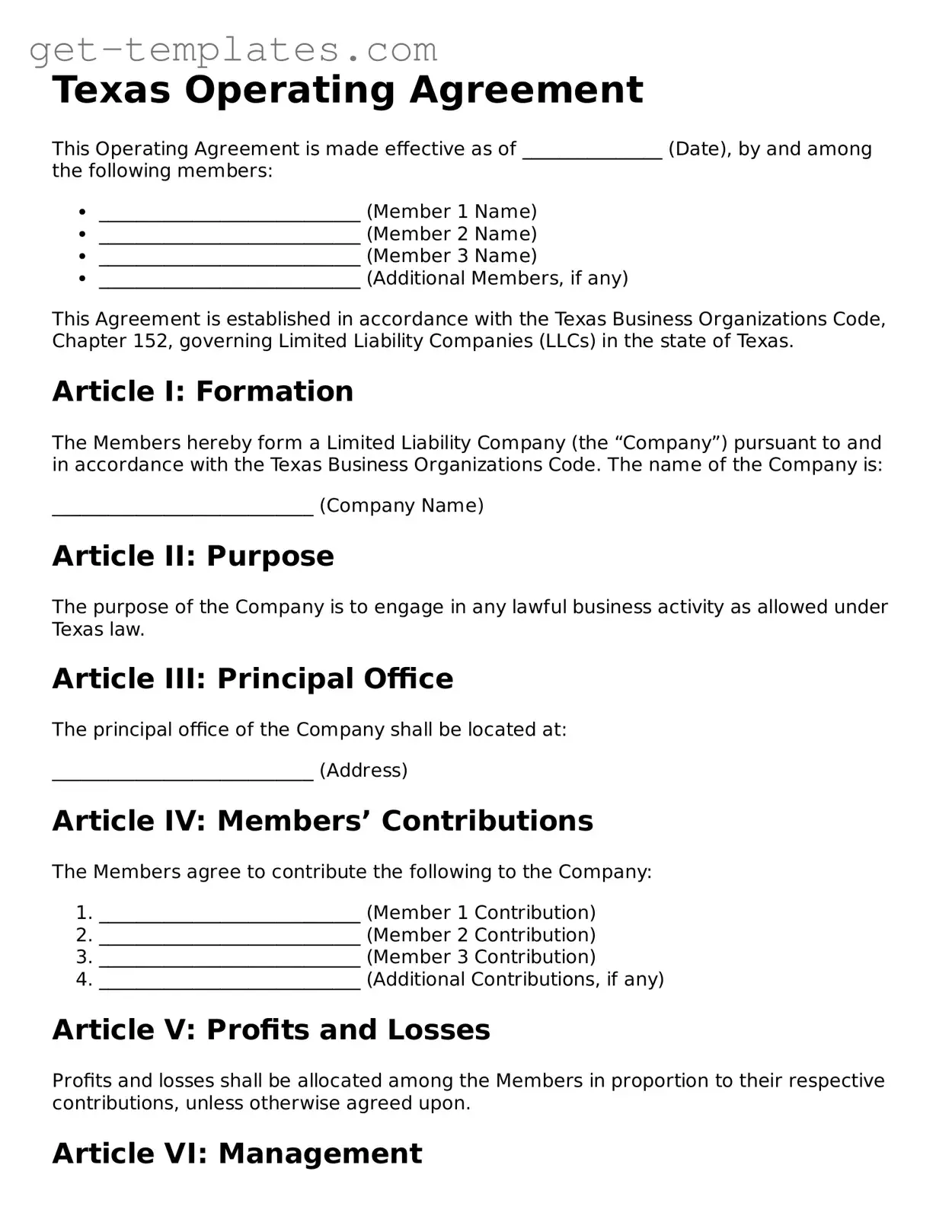Texas Operating Agreement
This Operating Agreement is made effective as of _______________ (Date), by and among the following members:
- ____________________________ (Member 1 Name)
- ____________________________ (Member 2 Name)
- ____________________________ (Member 3 Name)
- ____________________________ (Additional Members, if any)
This Agreement is established in accordance with the Texas Business Organizations Code, Chapter 152, governing Limited Liability Companies (LLCs) in the state of Texas.
Article I: Formation
The Members hereby form a Limited Liability Company (the “Company”) pursuant to and in accordance with the Texas Business Organizations Code. The name of the Company is:
____________________________ (Company Name)
Article II: Purpose
The purpose of the Company is to engage in any lawful business activity as allowed under Texas law.
Article III: Principal Office
The principal office of the Company shall be located at:
____________________________ (Address)
Article IV: Members’ Contributions
The Members agree to contribute the following to the Company:
- ____________________________ (Member 1 Contribution)
- ____________________________ (Member 2 Contribution)
- ____________________________ (Member 3 Contribution)
- ____________________________ (Additional Contributions, if any)
Article V: Profits and Losses
Profits and losses shall be allocated among the Members in proportion to their respective contributions, unless otherwise agreed upon.
Article VI: Management
The management of the Company shall be vested in:
- ____________________________ (Managing Member Name if applicable)
Members shall have the authority to make decisions collectively unless otherwise stated in this Agreement.
Article VII: Indemnification
The Company shall indemnify each of its Members against any and all expenses and liabilities incurred in connection with the Company to the fullest extent permitted by Texas law.
Article VIII: Amendments
This Agreement may be amended only by a written agreement signed by all Members.
Article IX: Governing Law
This Agreement shall be governed by and construed in accordance with the laws of the State of Texas.
IN WITNESS WHEREOF, the Members have executed this Operating Agreement as of the day and year first above written:
____________________________ (Member 1 Signature) ____________________________ (Date)
____________________________ (Member 2 Signature) ____________________________ (Date)
____________________________ (Member 3 Signature) ____________________________ (Date)
____________________________ (Additional Members Signatures, if any)
